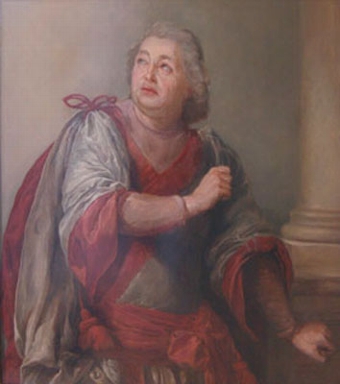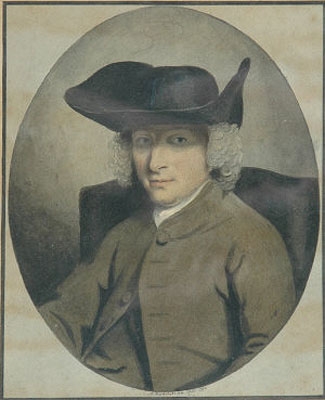featured item

quality pair of antique edwardian postal scales and weights Read more
labourers quarrying and loading sand with their resting shire horses in a count
- View other items in:
- antiques interior design modern and vintage
- other interior design
artware ltd
Enquire about this antique
Artware Ltd has 565 antiques for sale.
click here to see them all
Shire Horses were traditionally used by quarrymen to help with the process of extracting sand from countryside sand quarries. The horses who were bread to cope with heavy loads of quarreyed sand from the sand that was tranpsorted in robust carts to the network of canals and from the 1830''s the growing newtwork of railways. This painting by Augustus Boult illustrates this particular countryside activity.
The Shire horse is a breed of draught horse (BrE) or draft horse (AmE). The breed comes in many colors, including black, bay and gray. They are a tall breed, with mares standing 16 hands (64 inches, 163 cm) and over and stallions standing 17 hands (68 inches, 173 cm) and over. The breed has an enormous capacity for weight pulling, and Shires have held the world records for both largest overall horse and tallest horse at various times. Throughout its history, the breed has been popular for pulling brewery wagons that delivered ale to customers. This practice continues today, with the breed also being used for forestry, leisure and promotional pursuits. The breed descends from war horses brought to England by William the Conqueror in the 11th century. These were crossed with other breeds, including the Friesian, to create the Shire of today. In 1884, the organization now known as the British Shire Horse Society was created, with the American Shire Horse Association beginning in 1885. The breed was exported from Britain to the United States in large numbers during the late 19th and early 20th centuries, but popularity fell with the advent of mechanization, reaching a low point in the 1950s and 60s. Popularity began to increase again in the 1970s and after. However, population numbers are still considered to be at critical levels by both the UK-based Rare Breeds Survival Trust and the US-based American Livestock Breeds Conservancy. Shire stallions may be black, bay or gray. They may not be roan or have large amounts of white markings. Mares and geldings may be black, bay, gray or roan. In the UK stallions may not be chestnut but the color is allowed by the US registry. Stallions stand 17 hands (68 inches, 173 cm) high when mature, and they average around 17.2 hands (70 inches, 178 cm). Geldings stand at least 16.2 hands (66 inches, 168 cm) high and mares at least 16 hands (64 inches, 163 cm).[citation needed] The Shires'' head is long and lean, with large eyes, set on a neck that is slightly arched and long in proportion to the body. The shoulder is deep and wide, the chest wide, the back muscular and short and the hindquarters long and wide. There is not to be too much feathering, and the hair is fine, straight and silky. Smaller horses, under 17 hands (68 inches, 173 cm), are generally preferred for working horses, while taller horses, especially those over 18.2 hands (74 inches, 188 cm), are used for show and promotional purposes. The breed is known for its easy-going temperament. The Shire has an enormous capacity for weight pulling. In 1924, at a British exhibition, a pair of horses was estimated to have pulled a starting load equal to 45 tons, although an exact estimate could not be made as they exceeded the maximum reading on the dynamometer. Working in slippery footing, the same pair of horses pulled 16.5 tons at a later exhibition. The largest horse in recorded history was probably a Shire named Mammoth, who was born in 1848. He stood 21.2 hands (86 inches, 218 cm) hands high, and his peak weight was estimated at 1,500 kilograms (3,300 lb). At over 19 hands (76 inches, 193 cm), a Shire gelding named Goliath was the Guinness Book of World Records record holder for the world''s tallest horse until his death in 2001. Like its close relative, the Clydesdale, the Shire horse is descended from the Great Horse brought to England in 1066 by William the Conqueror.[dubious ? discuss] Only stallions were imported, to carry knights in armour into battle?weighing up to 32 stones (450 lb or 205 kg)?and it is probable that they bred with native mares in the vicinity.[citation needed] Though oxen were used for most farm work into the 18th century, horses ''fit for the dray, the plough, or the chariot'' were on sale at Smithfield Market in London as early as 1145. The English Great Horse was valued during the reign of Henry VIII, when stallions measuring less than ''fifteen handfuls'' could not be kept, but the advent of gunpowder in the late 16th century brought an end to the use of heavy horses in battle. Oliver Cromwell''s cavalry favoured lighter, faster mounts and the big horses began to be used for draught work instead. Stage coaches needed strong horses to draw them and the Great Horse found a new niche. During the 16th century, Dutch engineers brought Friesian horses with them when they came to England to drain the fens, and it is probable that these horses had a significant influence on what became the Shire breed.
From this medieval horse came an animal called the Old English Black Horse in the 17th century. The Black Horse was improved by the followers of Robert Bakewell, of Dishley Grange in Leicestershire, resulting in a horse commonly known as the "Bakewell Black."[9] Bakewell imported six Dutch or Flanders mares, notable since breeders tended to concentrate on improving the male line. Two different types of black horse developed: the Fen or Lincolnshire type and the Leicester or Midlands type. The Fen type tended to be larger, with more bone and extra hair, while the Midlands type tended to have more endurance while being of a finer appearance. The term "Shire horse" was first used in the mid-17th century, and incomplete records begin to appear near the end of the 18th century. The "Packington Blind Horse", from Leicestershire, is one of the best-known horses of the era, with direct descendents being recorded from 1770 to 1832. This horse is usually recognized as the foundation stallion for the Shire breed, and he stood at stud from 1755 to 1770. During the 1800s, Shires were used extensively as cart horses to move goods from the docks through the cities and countryside. The rough roads created a need for large horses with extensive musculature.
A bay-colored Shire, showing Clydesdale influence in colour and markingsIn 1878, the English Cart Horse Society was formed, and in 1884 changed its name to the Shire Horse Society. The Society published a stud book, with the first edition in 1878 containing 2,381 stallions and records dating back to 1770. Between 1901 and 1914, 5,000 Shires were registered each year with the British registry.The first Shires were imported to the United States in 1853, with large numbers of horses being imported in the 1880s. The American Shire Horse Association was established in 1885 to register and promote the breed. The Shire soon became popular in the United States, and almost 4,000 Shires were imported between 1900 and 1918. Approximately 6,700 Shires were registered with the US registry between 1909 and 1911. Around the time of World War II, increasing mechanization and strict regulations on the purchase of livestock feed reduced the need for and ability to keep draft horses. Thousands of Shires were slaughtered and several large breeding studs closed. The breed fell to its lowest point in the 1950s and 1960s, and in 1955 fewer than 100 horses were shown at the annual British Spring Show.
In the 1970s the breed began to be revived through increased public interest. Breed societies have been established in the United States, Canada, the Netherlands, France and Germany, and in 1996 the first World Shire Horse Congress was held in Peterborough. The first use within the breed of artificial insemination through frozen semen was with several Australian mares in 1997. Between the 1920s and 1930s and today, the Shire has changed in conformation. The Clydesdale was used for crossbreeding in the 1950s and 1960s, which changed the conformation of the Shire and most notably changed the feathering on the lower legs from a mass of coarse hair into the silky feathering associated with modern Shires. At the peak of their population, there were over a million Shires. In the 1950s and 1960s this number declined to a few thousand. Today, the British Shire Horse Society receives around 500 annual registrations. In the United States, the Shire population dropped significantly in the early parts of the 20th century, and continued to decline in the 1940s and 1950s. Between 1950 and 1959, only 25 horses were registered with the US registry. However, numbers began to increase, and 121 horses were registered in the US by 1985. The National Shire Horse Spring Show is still held annually and up to 250 horses compete each year Currently, the American Livestock Breeds Conservancy considers the population of the Shire to be at "critical" levels, meaning that the estimated global population of the breed is less than 2,000 and there are less than 200 registrations annually in the US. The UK Rare Breeds Survival Trust considers the breed to be "at risk", meaning that population numbers are estimated to be under 1,500. The Equus Survival Trust considers the breed to be "vulnerable", meaning that there are between 500 and 1500 active adult breeding mares in existence today. A gray Shire employed in forestryThe Shire horse was originally the staple breed used to draw carts to deliver ale from the brewery to the public houses. A few breweries still maintain this tradition in the UK. These include the Wadworth Brewery in Devizes Wiltshire, the Hook Norton Brewery, the Samuel Smith Brewery in Tadcaster, and Thwaites Brewery in Blackburn, which resumed horse-drawn deliveries in 2008. Several breweries have recently withdrawn their Shire horse teams, including the Tetley brewery in Leeds.
Antiques.co.uk Ref: BR45UNDJ
- Materials:
- Oil on Canvas
- Width (cm):
- 45.00 x 56.00 cm 17.72 x 22.05 ins
Artware Ltd
Artware Fine Art specialises in fine antique, decorative and historical portraits and topographical pictures . We cover a period from the 17th and 18th centuries through to the 19th & 20th Centuries. We have over 150 portraits in stock, which can be viewed on our web site, each historical portrait has well researched biographical information both on the sitter and the artist.
Contact details
18 La gare
51 Surrey row
London
Greater London
SE1 0BZ
UNITED KINGDOM
T: 0207 921 97904
E: greg@artwarefineart.com
W: www.artwarefineart.com











